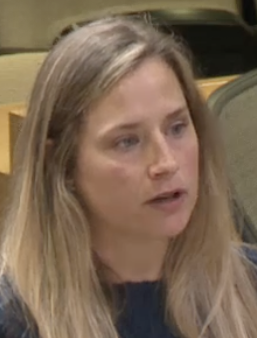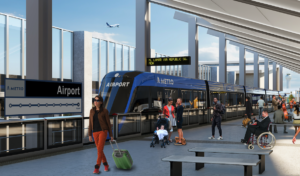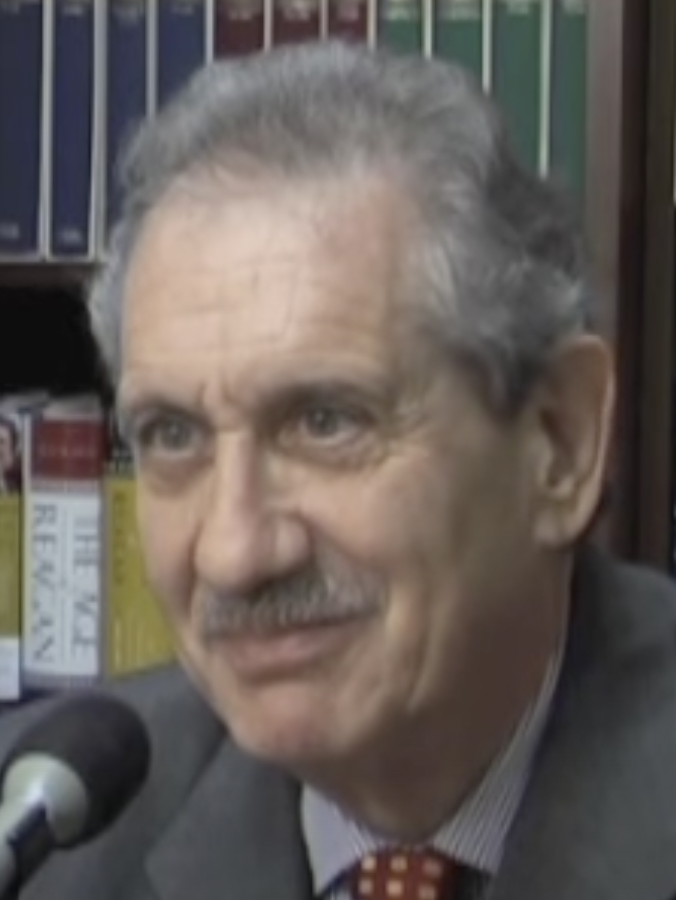City staff employed by the Convention Center Department could remain on the payroll for four to five years despite closure of the Convention Center itself, according to departmental plans.
“We are planning to keep all 300 of our current full-time staff on board,” said Chief Administrative Officer Katie Zamesnik at a recent meeting of the Tourism Commission.

In response to inquiries from the Bulldog, the department reiterated the same position: “The Austin Convention Center does not anticipate any staffing reductions of full-time employees during the time of closure.”
Construction to expand the center, which occupies six city blocks in downtown Austin, is expected to begin in 2024 and would suspend events at the facility for about four years.
Some staff will still be needed to operate the Palmer Events Center, a smaller facility at Auditorium Shores Park, plus two downtown parking garages, a warehouse, and a marshalling yard available for hire, said Director Trisha Tatro.

The department also plans to host some smaller events by employing a “campus” style approach in collaboration with hotels, which have their own event spaces, Tatro and Zamesnik told the commission. “We will be working to accommodate as many small events as possible,” Tatro said.
Other staff could be “farmed out” to other city departments. “There are many needs throughout the city for custodian staff, that kind of thing, that we can provide some help to some other city departments without them having to go out and hire other folks for however long we’re under construction,” Zamesnik said.
Asked by email whether at least some staff would end up being idle during the four-year closure, given the reduced events schedule, Tatro responded through a spokesperson, saying that staff “will be utilized to manage the redevelopment and expansion project, work with current and future clients to maximize booking and planning events within the new facility and train our staff for a successful reopening.”
Tatro didn’t respond directly to a question about whether the department had considered layoffs.
Currently the city faces a staffing shortage, and the spokesperson noted, “there currently exists a citywide need for our staffing skill sets.” However, it isn’t clear that there will still be a shortage when the Convention Center closes in 2024, or whether Convention Center staff will be qualified for the positions needed. The department hasn’t yet begun working with other departments to finalize a staffing plan, the spokesperson said.
Temp employees face layoffs
Although all 301 full-time staff will remain on the payroll, the Convention Center plans to cut costs by reducing overtime and cutting back on temporary staffing. Currently, the department “ratchets up and down” the use of temporary staff and overtime based on upcoming conventions, Tatro said. With fewer events planned, it shouldn’t need to use temporary staff.
The department will also consider not immediately replacing employees who retire or take a job elsewhere.
However, such cost-control measures resulted in only limited savings during the pandemic. Operating expenses in personnel decreased just 13.7 percent in FY 2021 even as revenue overall plunged 63.9 percent, according to the city’s FY 2021 financial report.
According to a roster of employee salaries obtained by public information request, the department employs more than 450 individuals, costing the city $17.8 million per year in salaries. However, some of those are part-time or temporary staff. The city budget authorizes only 301 full-time positions.
On average, the Convention Center spent $20.9 million on salary and benefits each year from 2015-2019, according to departmental finances included in a 2021 analysis prepared by HVS, a city-contracted consulting firm. That accounted for 72 percent of the Convention Center’s operating expenses.
The Convention Center spokesperson told the Bulldog that they couldn’t provide an estimate of payroll costs during the closure, saying, “We are currently in the very early stages of this project; our first step of many is releasing the Request for Qualifications for design services. Once a firm is on board and we can begin setting our construction schedule, we will begin working with all the relevant and necessary departments in the City to develop a staffing plan for the period that the Center is closed.”
“As we noted earlier, there currently exists a citywide need for our staffing skill sets. Estimates for payroll expenses during the closure will be informed by not only the construction schedule but the staffing plan that is carefully and thoughtfully developed during the design process.”
Among those who will remain on the city payroll during the closure are sales and event professionals responsible for organizing events that would no longer be taking place. The department has a five-member marketing team, a 14-member sales team, an 18-member executive team, and a 17-member administrative division, according to an organizational chart of the department obtained by public information request.

Its largest division is Event Operations, which employs more than 60 workers, some of whom are part-time. It also has maintenance and security teams employing dozens.
John Riedie, a member of the Tourism Commission who opposes the expansion, told the Bulldog, “Retaining staff while the center is closed is a bid to keep union support for a massive boondoggle.”
Expansion plan
When the city council unanimously approved a plan to expand the Convention Center in 2019, the projected cost was $1.2 billion. The plan called for demolishing and replacing the Convention Center’s facilities with larger exhibition halls, ground-floor shops and restaurants, a pedestrian promenade, a rooftop terrace, and a large public pavilion.
It also called for the city to acquire several neighboring properties to expand the footprint of the center.
These plans went on hold during the pandemic as attendance at events plunged. In April 2021, as real estate prices skyrocketed, the city shelved plans to acquire an additional two-and-a-half city blocks west of the Convention Center, saying the asking price for the property was too high.
Given that change in plan, as well as inflated labor and materials costs, cost estimates for the expansion may need to be revised. For comparison, Project Connect, the city’s light rail project, recently hiked its forecast of construction costs by $380 million, citing “stresses on the supply chain, the increased cost on construction materials, a tight labor market, and the rapid growth of our region,” according to an April 2022 memo by transit planners.
Financial losses
If the Convention Center’s performance during the pandemic is any guide, then it could rack up substantial losses before construction of the new center is complete. During the 2021 fiscal year, the Convention Center brought in just $6 million of fee and rental revenue while expending $62 million, racking up an operating loss of $56 million, according to the city’s Annual Comprehensive Financial Report for that year.
Even before the pandemic, the Convention Center’s business was stalling, despite a population boom and a surge in business activity in the region.
From 2014 to 2019, the Convention Center relied increasingly on just one vendor, South by Southwest Conference and Festivals (SXSW), for 47 percent of its attendees, according to attendance figures reported by Honest Austin in 2020.

Attendance at non-SXSW events stagnated by 10 percent, and the total number of event bookings dropped by nearly a third.
Operating expenses exceeded non-tax revenue every year from fiscal 2015 through 2019, with the average net loss in those years being $11.7 million, or 40 percent.
The Convention Center can afford to operate at a deficit because it receives a substantial share of the city’s Hotel Occupancy Tax (HOT) revenue. That’s a tax levied on visitors when they settle their bill at a hotel. According to a City Auditor review of data from 2015 through 2020, hotel occupancy tax accounted for 71 percent of all Convention Center funding.
Next year, the Convention Center’s dependence on HOT tax revenue will increase as its operating revenue drops to zero. According to the city budget, “Operating revenue from the Convention Center itself is assumed to be zero beginning the second half of FY 2023-24 and continuing through the remainder of the (five-year) forecast period.”

By keeping the Palmer Events Center open, the department will earn $4 million a year in revenue, according to projections by HVS Convention, Sports & Entertainment Facilities Consulting (pg 4/10).
But that will do little to stem the loss of income from the closure of the Convention Center itself, and it might even amplify the losses, given the personnel costs. HVS’s analysis projects that the department’s yearly operating losses will average nearly $40 million from 2024 through 2027.
Even after the new Convention Center opens in 2028, the department will continue to lose at least $15 million per year until 2033 at the earliest. And that projection assumes that the expanded facility will be able to bring in several times more revenue than the current one.
These losses won’t impact the city’s general fund because of the department’s dedicated revenue stream from hotel tax. A spokesperson for the department’s spokesperson noted, “As an enterprise department, Austin Convention Center Department is not funded by property taxes, sales taxes, or transfers from the electric and water utilities.”
Gobbling HOT revenues
Even so, the Convention Center’s steep operating losses will eat into funding available for the arts and music. That’s because state law allows cities to spend HOT revenue to promote tourism and the arts, including music, dance, painting, film, photography, architecture, and drama.
In total, the city collects a 17-cents per dollar HOT tax for each night a hotel room is rented. Six cents of that must be remitted to the state, and two cents are a dedicated venue tax for expansion of the center, leaving a 9-cent share for the arts, tourism, and operations of the Convention Center.
The council has “broad discretion” in determining how to spend this portion, according to a 2019 letter to the council by five Austin attorneys critical of plans to expand the Convention Center. “If there is a reliable basis for believing that an expenditure might directly benefit tourism, the city has discretion to make the expenditure,” wrote the attorneys Bill Bunch, Bill Aleshire, Robert Levinski, Fred Lewis, and Jim Boyle.
The city could also use HOT revenue to fund a portion of Project Connect, the light rail project. Section 351.110 of the Tax Code authorizes a municipality to use HOT revenue “for a transportation system to transport tourists from hotels in or near the municipality to…the commercial center of the municipality (or) a convention center of the municipality.”

That description suits the proposed Project Connect Blue Line, which will ferry passengers between the airport and the downtown, stopping at airport hotels along the way. The Blue Line’s second-to-last stop will be at Metro Center Drive, near the airport, which is home to several hotels.
Another allowable use of HOT funds is historical preservation. The political action committee UnConventional Austin proposed in 2019 that the city use HOT funds to renovate the historic Palm School, the Red River District, and the Barton Springs Bath House, among other projects.
Through a petition drive, UnConventional Austin put a proposition on the November 2019 ballot to allocate more HOT revenue to cultural arts and historic preservation. The measure also would have required voter approval of any Convention Center expansion costing more than $20 million. Proposition B failed 46-54 percent.
‘The industry is in decline’
Supporters and critics of the Convention Center expansion disagree on whether the project will boost Austin’s economy.
According to University of Texas at San Antonio Professor Heywood Sanders, the convention industry is in long-term decline and there’s no evidence that expanding a convention center increases attendance.

“Over the last two decades we have seen a substantial increase in the supply of convention center space around the country…and yet what is striking is if we track those venues, we don’t necessarily see any consistent increase in their convention and trade show attendance,” he told the Tourism Commission last July.
On top of that, the pandemic triggered a permanent shift to more remote work and networking, reducing the need for large corporate gatherings.

“That will have a clear and direct negative impact on attendance,” said Sanders, a professor of public administration who authored a book about the industry, Convention Center Follies.
Riedie, a Tourism Commission member, told the Bulldog, “There is zero business case for the expansion, considering that the Convention Center generates less than 4 percent of overall tourism. The current center has never met its business projections and the overall industry is in decline, while convention space has grown as other cities also expand.”
“The reality is that this is a corporate welfare scheme for big downtown hotels, as expansions require ever larger subsidies to compete for dwindling business,” Riedie said.
On the other hand, business stakeholders who support the expansion say that it would create new jobs in the service sector, boost tax revenues, and enliven the downtown. Austin’s hotel industry, the Austin Chamber, and the Downtown Austin Alliance are among those who back the plan.
The Convention Center Department’s long-range master plan, prepared by two consulting firms in 2015, contended that an expansion was necessary to ensure Austin could compete with other convention destinations, such as Nashville and Dallas, which have larger and newer facilities.
The expansion would “draw more out-of-town visitors and their dollars and have a positive economic impact on the performance of the area’s hotels and local businesses,” the report stated.

Downtown Austin Alliance CEO Dewitt Peart wrote in a 2021 letter to the mayor and council that the larger Convention Center would help downtown businesses recover from the impacts of the COVID-19 pandemic.
A critical priority, he said, was to “ensure the design and function of the Convention Center space serves foremost the needs and demands of the convention, hospitality, and tourism markets.”
Another key beneficiary of the expansion would be SXSW. According to projections by consulting firm HVS, attendance at SXSW would increase by about 50,000.
Related coverage:
Unconventional Austin rallies for Proposition B, September 11, 2019
Unconventional Austin spent more than $131,000, July 15, 2019
Petition filed to force convention center vote, July 12, 2019








First article I’ve seen online about the Austin convention center business which cites the sources of its data. Thank you journalists at bulldog, for showing your work.
Thanks for noticing that we do, indeed, show our work. Always have, always will.
This looks a waste of tax dollars to me